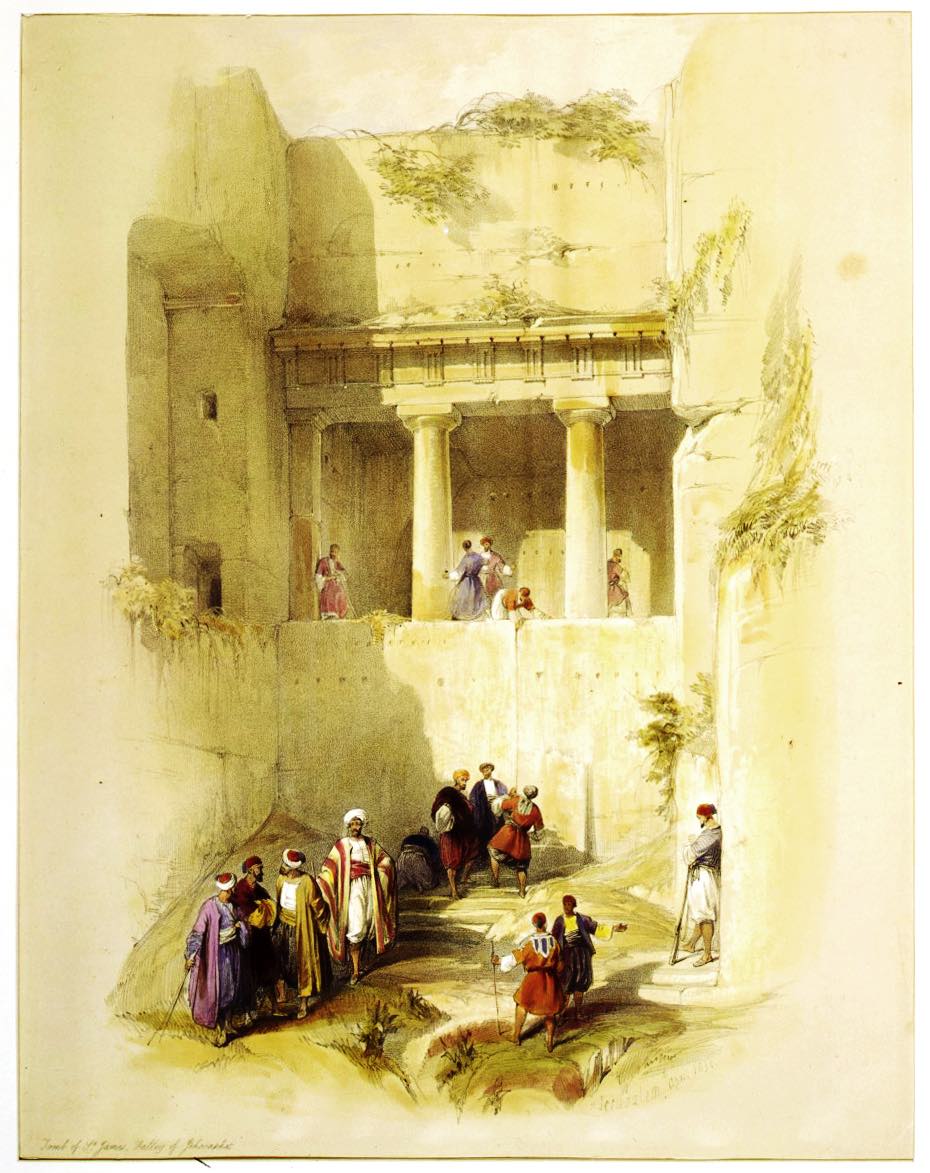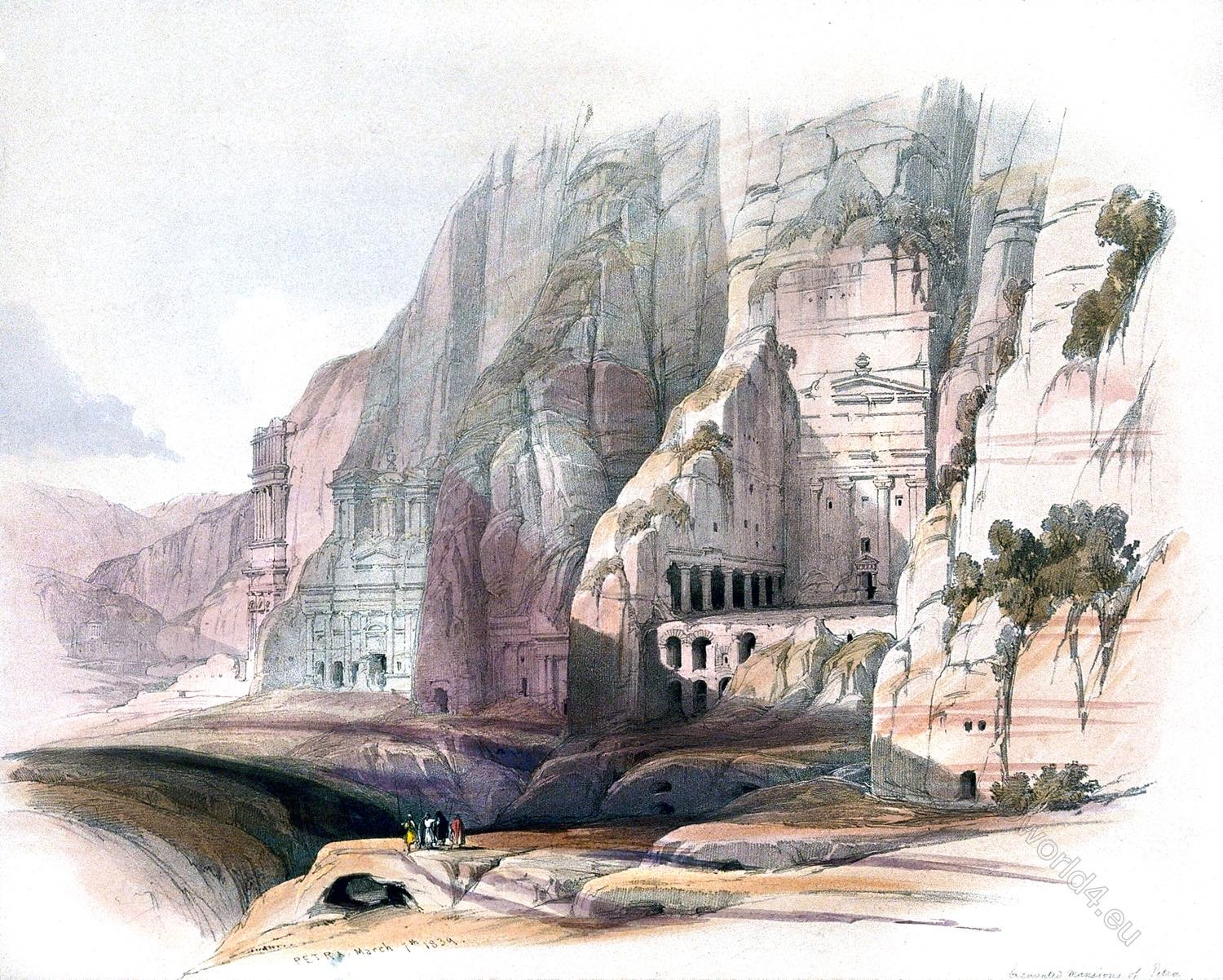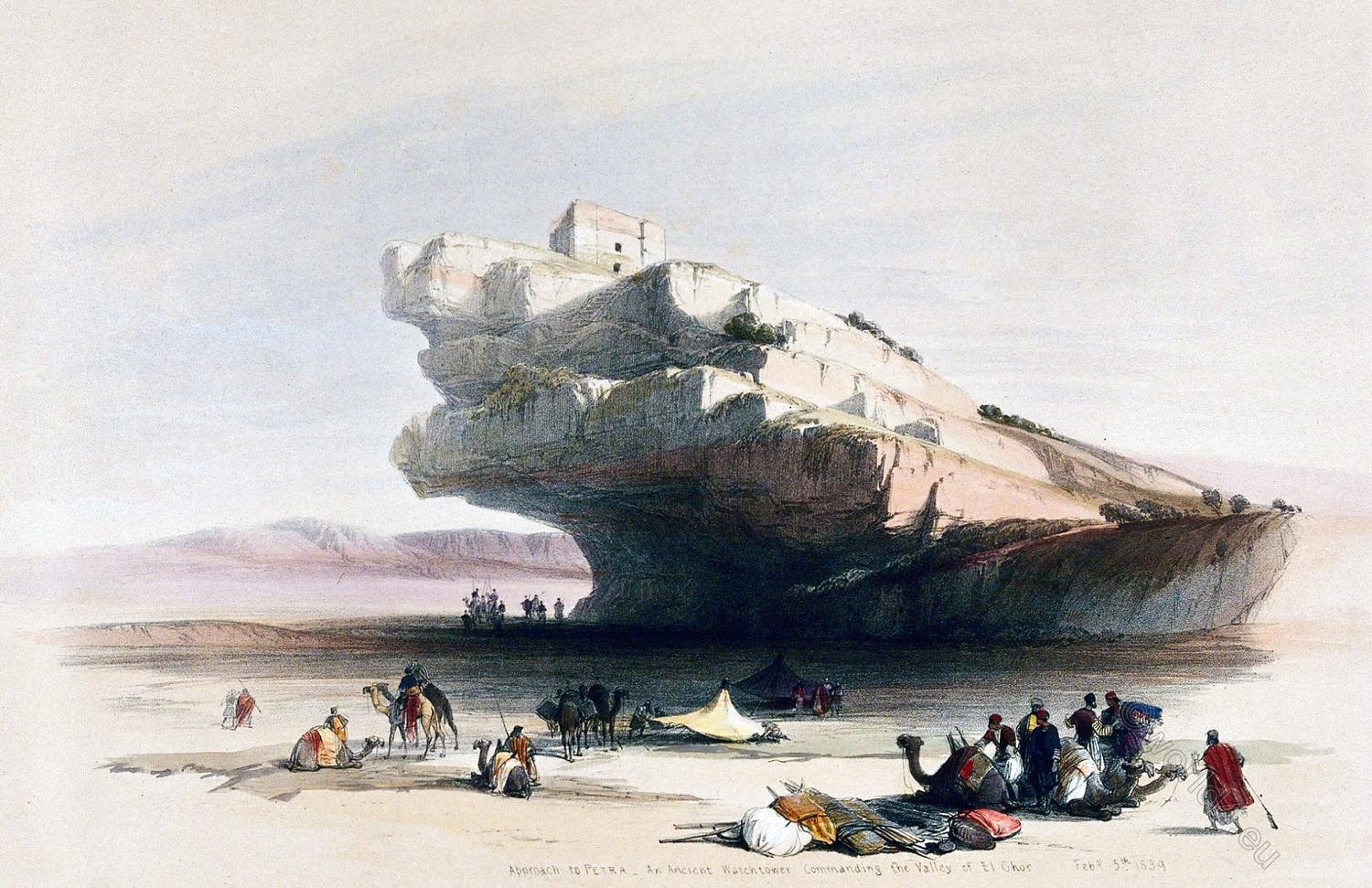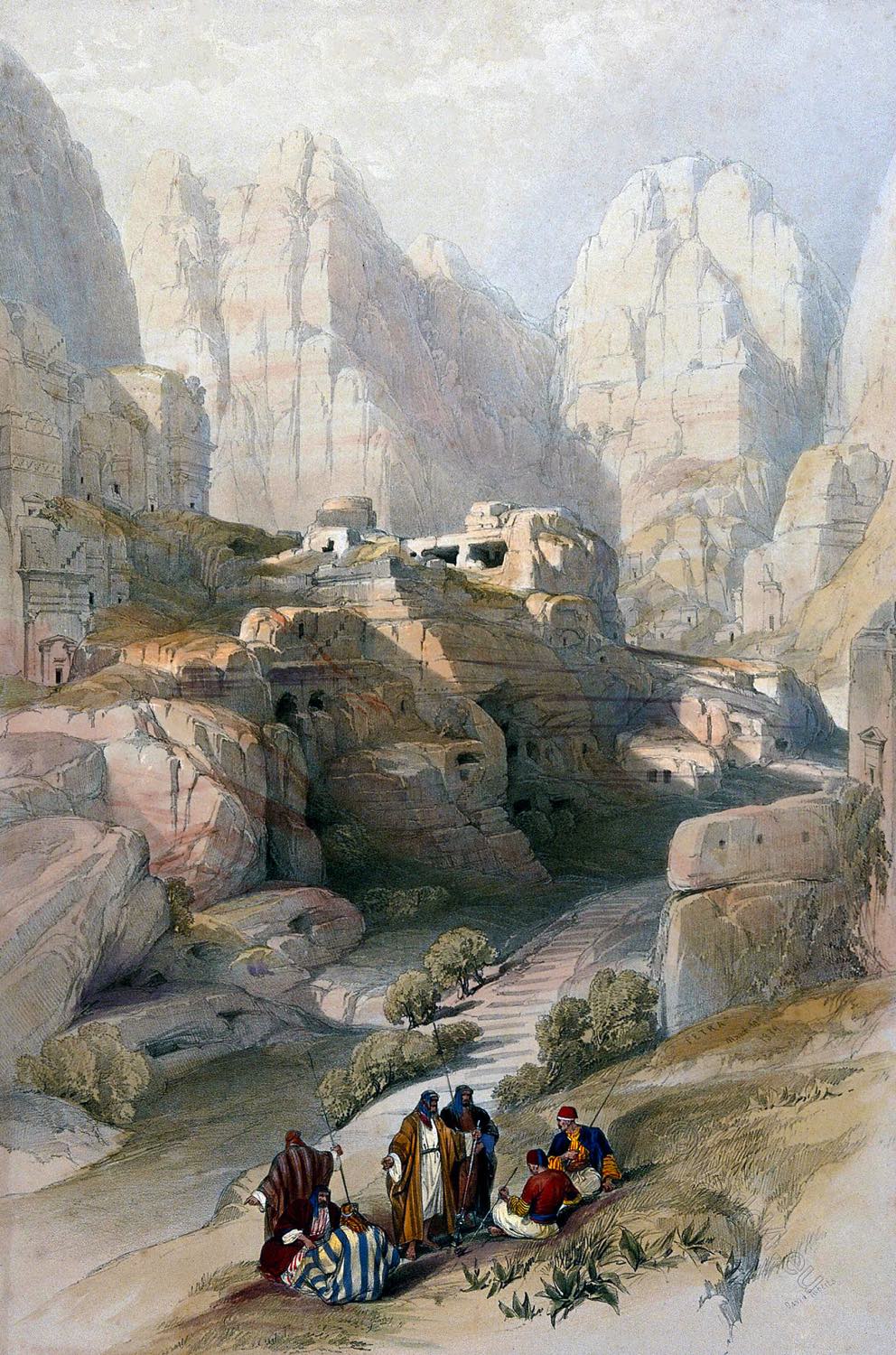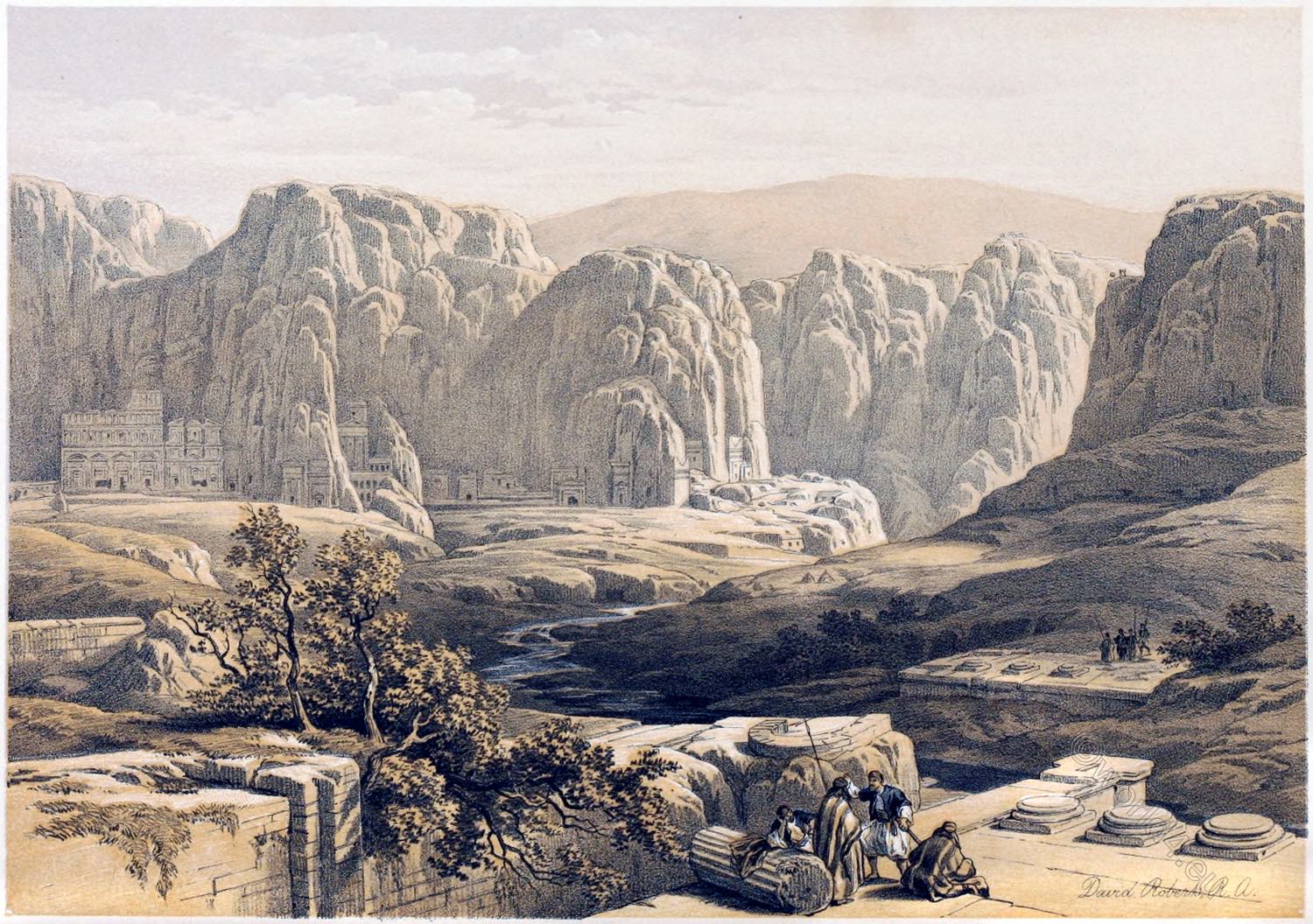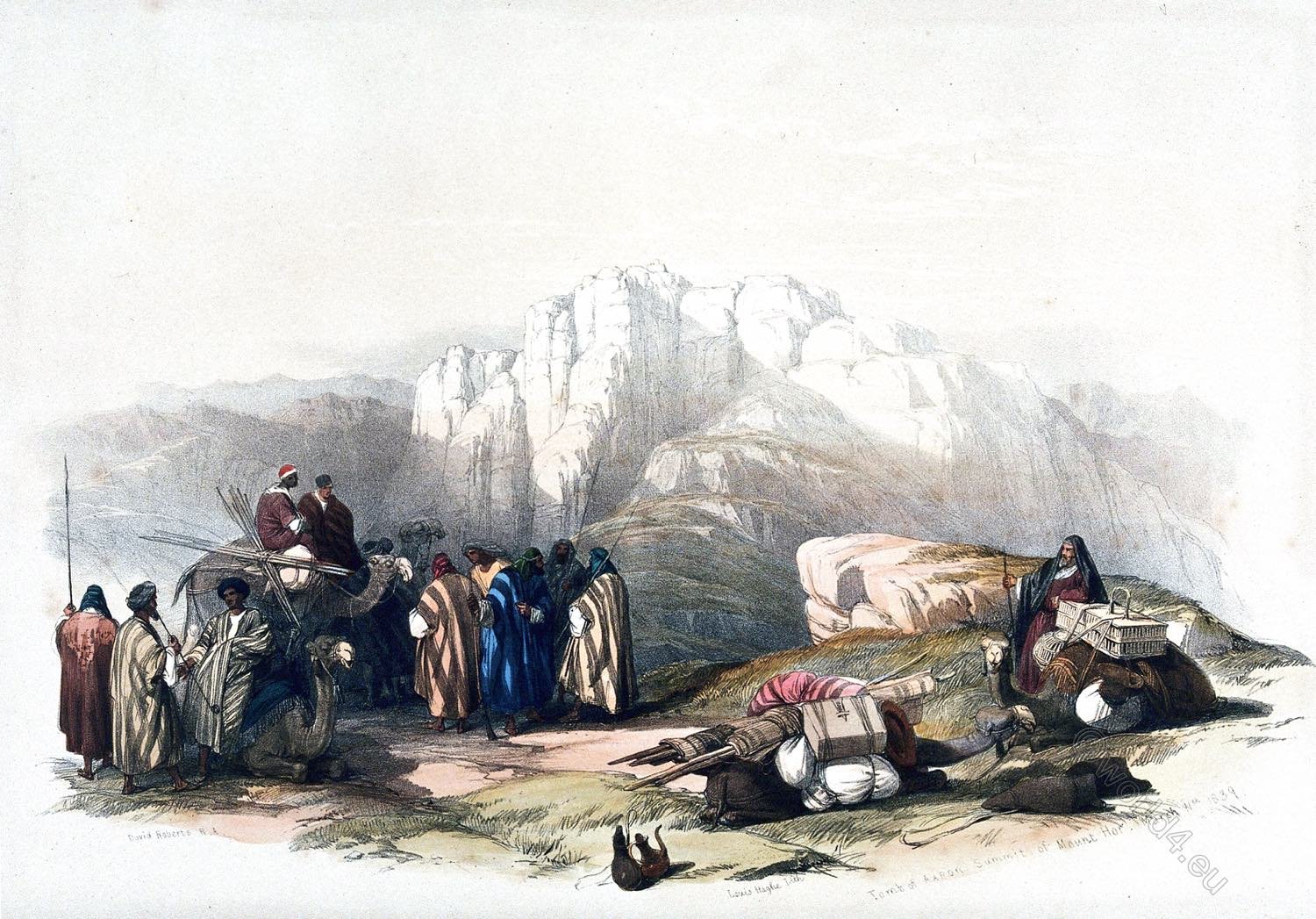
TOMB OF AARON, SUMMIT OF MOUNT HOR
by David Roberts.
Among the hills in the approach to Petra, the most striking is Mount Hor, from its boldness and height, and still more, from its connexion with Scripture. The ascent to the supposed Tomb of Aaron, which stands on its brow, occupies about an hour, and in its latter portion is extremely steep, often requiring to be climbed on the hands and knees.
In many parts, where it would have been otherwise impracticable, the steepness is relieved by flights of stairs. The upper clefts of the mountain are enriched with a large growth of juniper and other shrubs; and on the summit is a grotto, in which a kind of Arab hermit dwelt for forty years, the greater part within the present century. He has lately died and seems to have had no successor.
The Tomb is alluded to prior to the Crusades; it is in a vault, and for preservation it has long been enclosed in a building similar to a Mohammedan Saint’s Sepulchre. An iron grating once protected it from the unhallowed touch, but it has been broken down, and all may now approach.
The visitors, however, are compelled to descend into the vault with naked feet; an embarrassing necessity, in a place which may naturally be supposed to breed vipers and scorpions. It is still much resorted to by the Christian pilgrims, and is held in veneration even by the Mohammedan.
Source: The Holy Land, Syria, Idumea, Arabia, Egypt, & Nubia, by David Roberts (British, 1796-1864), George Croly, William Brockedon. London: Lithographed, printed and published by Day & Son, lithographers to the Queen. Cate Street, Lincoln’s Inn Fields, 1855.
Discover more from World4 Costume Culture History
Subscribe to get the latest posts sent to your email.

